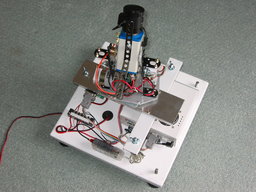
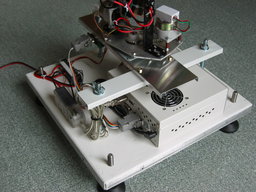
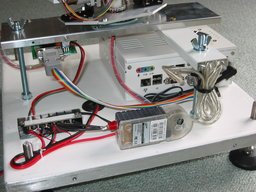

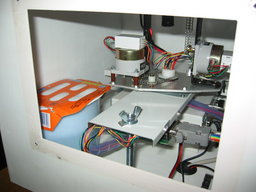
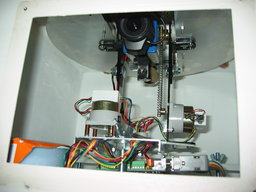
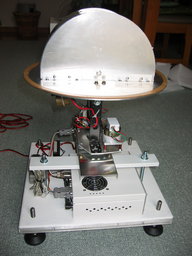
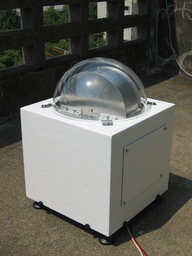
We are developing constellation camera "i-CAN" in a two-year project from 2005 to 2006, and the first constellation camera "i-CAN" has been completed. The camera will be installed in the site outside Japan, after solving minor problems.
| August, 2005 | |
|---|---|

|

|
| The camera system is mounted on the base of about 35 cm x 35 cm. We went through the process of trial and error to make the system small enough to fit in this size. The system is connected to external equipment via 12 VDC power cable and network cable. | The entire system is controlled by a small PC of 17cm x 17cm in size with a fan in the upper part (manufactured by E-Let's). Performance is achieved as expected with CPU (VIA C3) of 1 GHz clock and Linux OS. |

|

|
| Images from i-CAN are imported into the system with USB capturing device by Novac (discontinued product). The movie is played in RealVideo format that has been used by Internet astronomical observatories with good results. | The space on the right front is for placing drying agent to prevent the inside of the acrylic dome from being fogged. Keeping the acrylic dome dry is very important. |

|

|
| The system is contained in a box with drying agent. Stepping motor (manufactured by Japan Servo.) is used for tilt/pan camera. | Motor is driven with controller (manufactured by ASAKUSA GiKen), and ladder chain and sprocket is used for power transmission. |

|

|
| The mounted aluminum shutter moves according to the camera tilt. The shutter will be painted with special paint (to be mentioned later). | This is the first i-CAN under test on the rooftop of Kumamoto University. White color of the box is a very effective heat-proof paint, which prevents the equipment from overheating under the scorching sun (keeping mild temperature). In case of aluminum surface, the temperature would rise to the degree that you are unable to touch. The appearance of i-CAN somewhat looks like R2D2 from Star Wars, doesn't it? |
| Click here to browse the RealPlayer observation movie captured at Kumamoto University on the early morning of August 18, 2005. | |